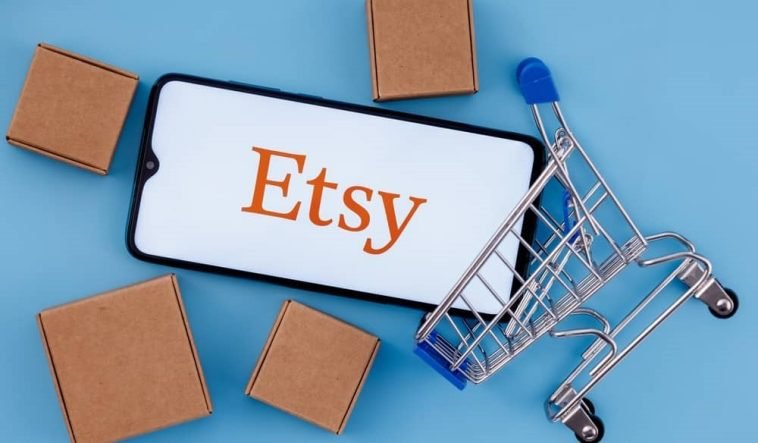Introduction.
Selling digital products on Etsy can feel like the dream setup—you create something once, list it, and start making sales.
No shipping. No inventory. No customer complaints about late deliveries. But there’s one big catch: your files are out there, and people can steal them.
If you’ve ever worried about someone downloading your product and sharing it for free (or worse, reselling it), you’re not alone. I’ve been there. It’s frustrating, it’s unfair, and it can honestly make you second guess if it’s all worth it.
But the good news is, you can protect your digital products—and you don’t need to be a tech wizard to do it.
In this guide, I’m walking you through exactly how to keep your digital items safe on Etsy, step-by-step.
From simple file tricks to legal options, I’ll cover the tools and tactics that actually work, based on real experiences—not guesswork.
Let’s get into it.
What Kind of Digital Products are at Risk?
If you sell anything that can be downloaded, it’s at risk of being copied or shared:
Printables (planners, checklists, journals)
SVGs or clipart for crafters
Lightroom presets or Photoshop actions
Digital patterns for knitting or sewing
eBooks or guides
Canva templates
Basically, if someone can save it, they can share it. But that doesn’t mean you’re powerless.
Step 1: Use the Right File Types
Some file types are easier to protect than others. Here’s what I recommend:
PDFs with password protection: You can use tools like Adobe Acrobat or free tools like PDF24 to lock your file with a password or restrict editing.
Flatten your designs: This is huge. If you’re sharing a Canva template or a design file, flatten the layers so people can’t easily pull apart your work. For example, save your designs as JPG or flattened PDF instead of layered PSD files.
Use watermarks (when it makes sense): You can add light watermarks for preview images or instructional files to remind people it’s for personal use only.
Step 2: Use a License Agreement
Yes, people often skip reading them—but having a clear terms of use document helps you set boundaries.
Your license should spell out:
What buyers can do (personal use, print for themselves, etc.)
What buyers can’t do (resell, redistribute, claim as their own)
Any commercial use limitations
You can add the license text:
In your listing description
In a separate PDF that’s included with the download
On your shop’s FAQ section
Here’s a quick template you can tweak:
“This file is for personal use only. You may not share, resell, or distribute this file. Commercial use is not allowed without prior permission.”
Want something more formal? Tools like Creative Market’s license generator can give you ideas too.
Step 3: Add Your Info Inside the File
You’d be surprised how often files get passed around with no credit.
A simple trick? Add your shop name, email, or Instagram handle somewhere inside the file. Not just on the cover—put it in the footer or a small corner of the design. That way, if it ends up floating around the internet, people still know where it came from.
Step 4: Track Stolen Content
This part isn’t fun, but it’s important.
Here’s how to check if your digital products have been stolen or shared illegally:
Use Google’s reverse image search: Upload your product photos and see where else they appear online.
Set up Google Alerts: Add phrases like your shop name or product titles to Google Alerts so you’ll get notified when they’re mentioned online.
Search file-sharing sites: Sites like Scribd or 4shared are common places for unauthorized sharing. Search your product names or key phrases there every few weeks.
Found a stolen listing or file? Don’t panic.
Step 5: Send a Takedown Notice (DMCA)
If someone’s stolen your product and posted it online, you can submit a DMCA takedown request.
Start by finding the site’s contact form or legal email. Use a simple, direct message like this:
Hello,
I’m the original creator of
“But First, Coffee” Mug
12.99 $
This is a violation of my copyright. Please remove it.
Here’s my original listing: [link to your Etsy product]
Here’s the infringing page: [link to the stolen copy]
Thank you,
[Your name/shop]
If it’s listed on Etsy by another seller, go to Etsy’s reporting form and follow the steps to file a claim.
Most sites take this stuff seriously and will remove the file pretty quickly.
Step 6: Register Your Copyright (Optional, but Smart)
If you’re in the U.S., you automatically own the copyright as the creator—but registering it with the U.S. Copyright Office gives you stronger legal protection. It’s not required, but if your work gets stolen and you want to take legal action, it helps a lot.
It costs around $45–$65 and you can file online here: https://copyright.gov
Step 7: Build a Community (This Helps More Than You Think)
This might sound random, but it’s actually one of the best things you can do:
Connect with your buyers. When people feel like they know you, they’re less likely to steal from you. Add personal notes to your downloads, ask for feedback, and build a brand that people want to support—not rip off.
Also, other sellers will have your back. Join Etsy Facebook groups or online communities where you can share experiences, ask for help, and warn each other about theft.
A Note on Canva Templates (Extra Tip)
If you sell Canva templates, use Canva Pro’s template links (rather than giving editable files). This way, people only get a copy of your design—not the original one you’re editing.
Always make sure you remove extra pages, unused graphics, and double-check your sharing settings before you send the link.
FAQs
Can Etsy help me if someone steals my product?
Yes. You can file a report through Etsy’s intellectual property portal. They’re usually responsive, but be ready to show that the product is truly yours (original files, timestamps, screenshots, etc.).
Can I stop people from downloading my product and sharing it?
You can’t 100% stop it—but you can make it harder and less appealing by adding licenses, watermarks, and including your branding. Most people won’t go through the effort if it’s not easy.
Should I use Etsy’s digital file delivery, or send files manually?
Stick with Etsy’s built-in digital delivery—it’s secure, easy for buyers, and less risky than sending files through email or external links.
Final Thoughts
Selling digital products on Etsy can be super rewarding. You get to share your creativity, earn passive income, and reach people all over the world. But I know how disheartening it feels to worry about theft or find your designs stolen.
The key is to stay one step ahead. Protect your work from the start, and set clear boundaries. Most people want to support creators like you—they just need reminders of what’s allowed.
So now I’m curious:
What steps are you taking (or planning to take) to protect your digital products?






GIPHY App Key not set. Please check settings